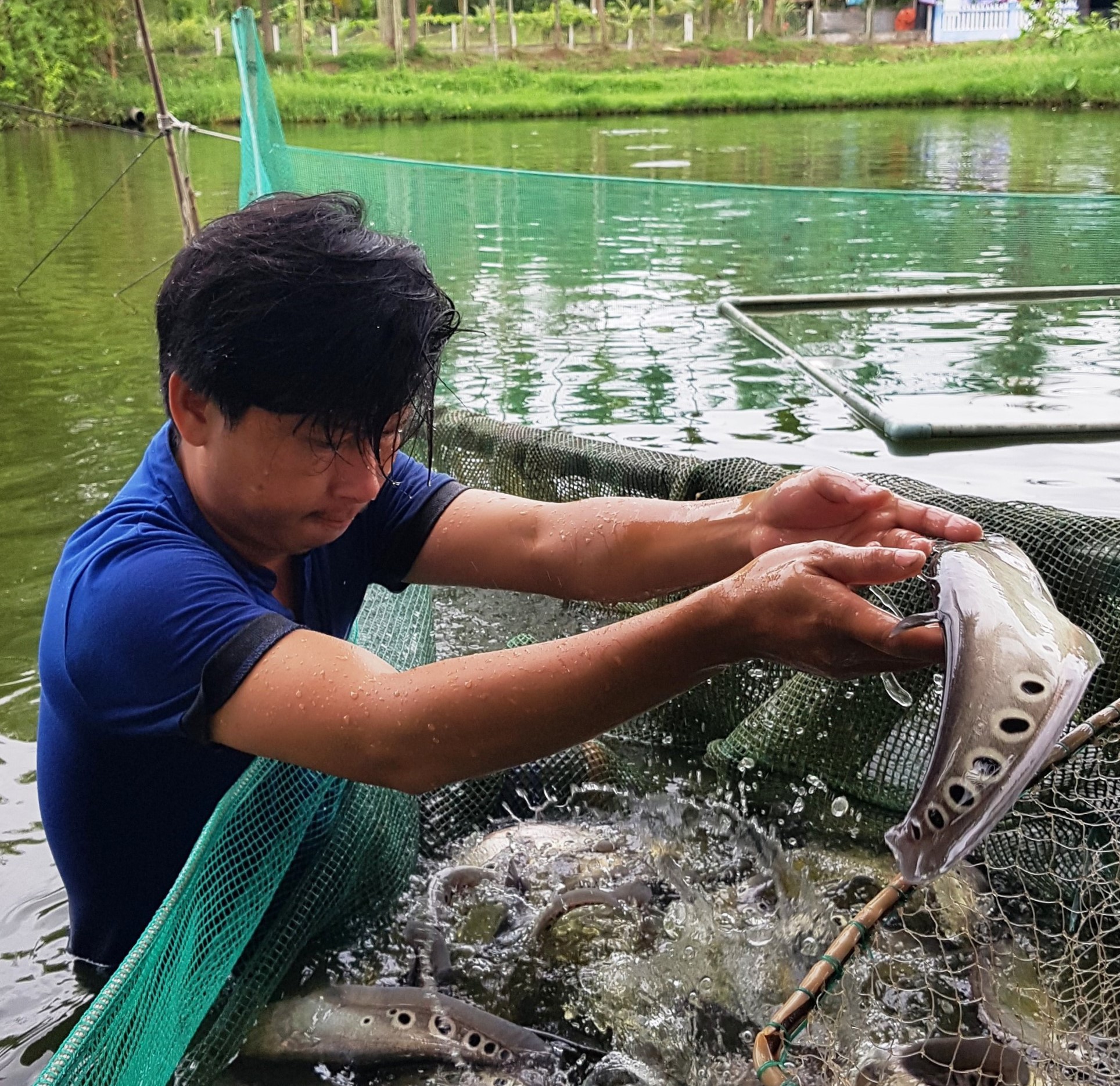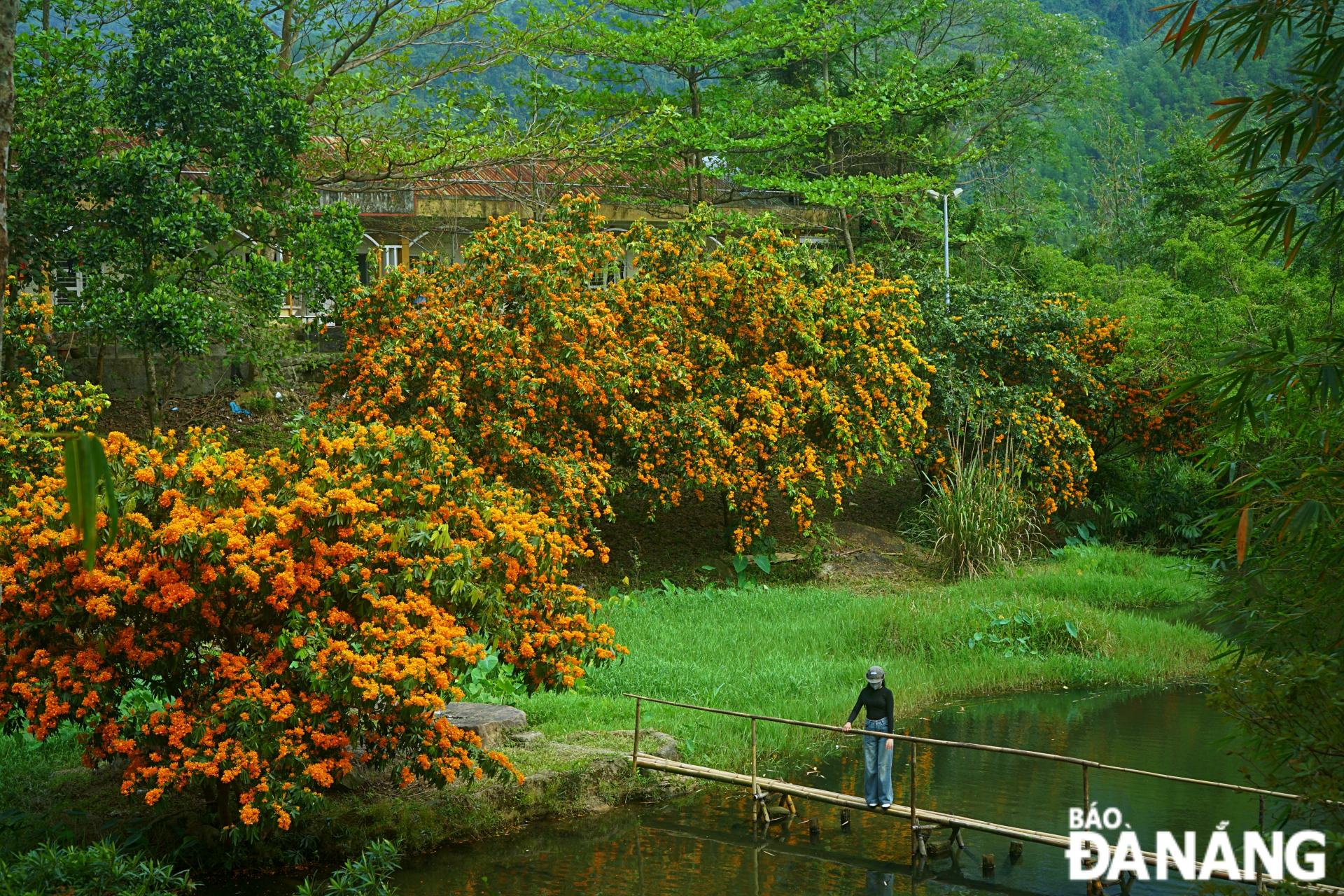Young men in Da Nang get rich from agriculture
With the passion and enthusiasm of youth, many agricultural start-up models of young people in rural areas have brought initial results, thereby not only making them rich but also contributing to gradually transforming and improving the agricultural sector.
 |
| Young people in rural areas start a business in the agricultural sector. IN PHOTO: Mr. Cao Van Toi takes advantage of his pond to start a business with 'thac lac' fish. Photo: HUU ANH |
A former engineer at a number of software programming companies, Mr. Nguyen Quang Phu (born in 1992, Hoa Son Commune, Hoa Vang District) began his entrepreneurial journey with a calcium worm farming model.
Mr. Phu recalled that in September 2023, during a training session at the headquarters of the People's Committee of Hoa Son Commune organised by the Da Nang Farmers' Association, he was introduced to the calcium worm farming model.
According to him, the model effectively treats domestic organic waste and manure, and limits environmental pollution. Notably, calcium worms are a nutritious food source for livestock and poultry.
With his great passion for clean agriculture, Mr. Phu is determined to pursue this model. In the early stages, there were times when worms crawled out of the tray and died for unknown reasons. He had to research and learn more on the internet and gain experience during the breeding process.
Currently, Mr. Phu owns an about 100m2 farming area and he raises and breeds calcium worms and repopulates black soldier flies in a closed manner.
According to Mr. Phu, the calcium worm farming model does not require much in terms of facilities, capital and land area but needs to ensure adequate food sources for the worms. On average, 1 gram of eggs will yield 2.5-3 kilos of calcium worms with a breeding time of 15-20 days. Each year, he can collect 2.5-3 tons of calcium worms from about a kg of eggs. The selling price for 30 grams of eggs is VND 170,000, 1 kg of calcium worms VND 30,000, 1 kg of calcium worm fertilizer VND 7,000; thereby helping Mr. Phu earn a stable income of VND 5-7 million per month.
Mr Phu added that the model helps reduce 80% of the cost of animal feed compared to the raising of chickens and wild boars. This is a model that can be produced in large quantities in a small space. He also supports farming techniques for 50 other farmers in communes in Hoa Vang District and other districts such as Thanh Khe, Hai Chau and Cam Le.
Meanwhile, with more than 10 years of experience in fish farming, Mr. Cao Van Toi (born in 1989, living in Hoa Khuong Commune, Hoa Vang District) has successfully started a business with making fish cakes.
Previously, Mr. Toi had about 5,000m2 of ponds which were used to raise only fish such as grass carp, common carp, catfish, and silver carp. In 2019, when the Centre for Fisheries, Agriculture, and Forestry Extension under the Da Nang Department of Agriculture and Rural Development piloted the farming of ‘thác lác’ fish (clown knife fish), Mr. Toi boldly registered and was supported with breeds and techniques.
After more than a year of experimenting and taking care of the fish, his family's first batch was ready for sale. However, the COVID-19 pandemic caused difficulties in trading activities. At the same time, he "tried" to make ‘thác lác’ fish cakes.
"Seeing that the fish cakes were delicious, I just made a lot to give to relatives and friends to try and received positive feedback, so I posted them for sale on social networks such as Zalo and Facebook. Just like that, while making fish cakes, I also received feedback from customers and learn more knowledge to come up with the right recipe. Thanks to that, the number of orders is increasing, and he can produce about 15-20kg of fish cakes per day” Mr. Toi recalls.
Realising the potential for developing a new livelihood from making ‘thac lac’ fish, Mr. Toi proactively released a new batch and invested more than VND 200 million to buy machinery and build a factory. He also actively participated in fairs and promotion activities in the city to seek customers and expand the consumption market. Every month, his facility consumes about 2.2 tonnes of fresh clown knife fish, and sells more than 1 ton of finished fish cakes to the market.
In the future, he will continue to research and develop a number of product lines such as vacuum-packed fresh fish, snail cakes, sausages, and Chinese sausages from fish to diversify products, and support output for other fish farmers in the locality.
In recent times, the development of urban agriculture, organic agriculture, clean agriculture and especially agriculture combined with experiential tourism in the city has been effectively deployed with many creative models.
Reporting by TRAN TRUC - Translating by M.DUNG, T.TUNG








